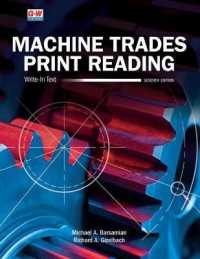Full Description
Rich in content, this handbook describes theories and practices of forensic science to both practitioners and students of the subject. Beginning with a strategic orientation, it identifies the processes needed to make scientifically and legally reliable decisions about the focus, priority and sequence of examinations of laboratory evidence. Providing an in-depth review, it features leading voices in the field and discusses cutting edge topics such as DNA typing, infrared theory, forensic toxicology and common practices employed by crime laboratories.
Contents
Chapter 1Scene Chapter 3: Recording the Crime Scene Chapter 4: Collection of Crime Scene Evidence Chapter 5: Physical Evidence Chapter 6: Crime Scene Reconstruction Chapter 7: Fingerprints Chapter 8: Firearms, Toolmarks, and Other Impressions Chapter 9: Bloodstain Pattern Analysis Chapter 10: Drugs Chapter 11: Forensic Toxicology Chapter 12: Trace Evidence I: Hairs and Fibers Chapter 13: Trace Evidence II: Paint, Glass, and Soil Chapter 14: Biological Stain Analysis: DNA Chapter 15: Forensic Aspects of Fire Investigation Chapter 16: Forensic Investigation of Explosions Chapter 17: Document Examination Chapter 18: Computer Forensics Chapter 19: Forensic Science and the Internet







